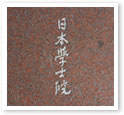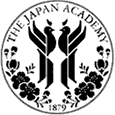About The Japan Academy
Operated under the auspices of the Ministry of Education, Culture, Sports, Science and Technology, The Japan Academy (Nippon Gakushi-in) is an organization that accords special recognition to researchers with the most eminent records of academic and scientific achievement. The Academy's primary purpose is to carry out programs that contribute to the advancement of academic pursuit.
With a 140-year history, the Academy was first established in 1879 by Yukichi Fukuzawa under the name Tokyo Academy. Now, it has 150 regular members, all selected upon the merits of their academic accomplishments.
The Academy's main programs are awarding prizes of recognition, including Imperial Prize, Japan Academy Prize and the Duke of Edinburgh Prize, compiling and publishing the Academy's journals, holding public lectures, and conducting exchanges with academies in other countries. All of these programs are designed to contribute to the advancement of science both in Japan and abroad.
Since joining the now 58-member country strong Union Académique Internationale (UAI) in 1919, the Academy has been carrying out a vigorous program of international activities. These collaborations are implemented via agreements signed with overseas academic institutions and by inviting distinguished scientists from counterpart countries to be honorary members of the Academy.
About the Academy's Doorplate
 At the time the Japan Academy's new hall was inaugurated in May 1974, this polished granite tablet inscribing the Academy's name was hung as a doorplate in the foyer of the building. The calligraphy was brushed by Prof. Shigeru Nambara, a former president of the Academy.
At the time the Japan Academy's new hall was inaugurated in May 1974, this polished granite tablet inscribing the Academy's name was hung as a doorplate in the foyer of the building. The calligraphy was brushed by Prof. Shigeru Nambara, a former president of the Academy.
Symbol Mark
 The emblem of the Japan Academy is based on the medal of the Japan Academy which was established as Imperial Prize in 1911. The medal was designed by a late Academy member Prof. Shogoro Tsuboi. In the Kojiki (early 8th century "Record of Ancient Matters", it is written that when the world darkened because the sun goddess Amaterasu Omikami shut herself inside the Heavenly Rock-Dwelling cave, the god of wisdom Omoikane devised a plan to lure her out using a chorus of naganakidori (long-singing roosters), whose cry augurs the dawn of a bright, new day. Pondering the essence of the natural world in reflection of these naganakidori, the Academy decided to use two of them encircled by cherry blossoms in the design of the Japan Academy emblem.
The emblem of the Japan Academy is based on the medal of the Japan Academy which was established as Imperial Prize in 1911. The medal was designed by a late Academy member Prof. Shogoro Tsuboi. In the Kojiki (early 8th century "Record of Ancient Matters", it is written that when the world darkened because the sun goddess Amaterasu Omikami shut herself inside the Heavenly Rock-Dwelling cave, the god of wisdom Omoikane devised a plan to lure her out using a chorus of naganakidori (long-singing roosters), whose cry augurs the dawn of a bright, new day. Pondering the essence of the natural world in reflection of these naganakidori, the Academy decided to use two of them encircled by cherry blossoms in the design of the Japan Academy emblem.



